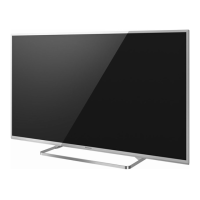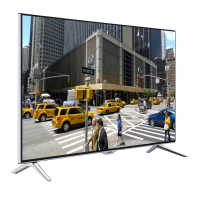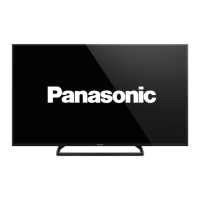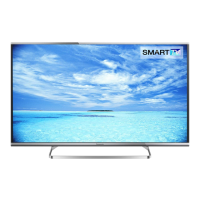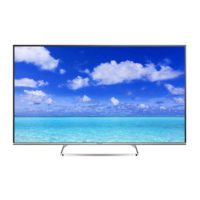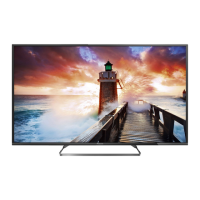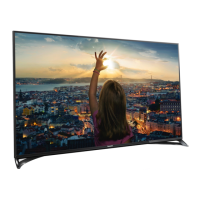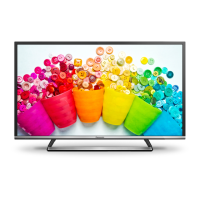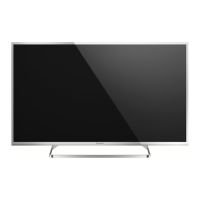Do you have a question about the Panasonic TX-47AS802B and is the answer not in the manual?
Guides on connecting and using external devices like HDMI and AV equipment.
Configures sound modes, equalizer, and speaker output for enhanced audio.
Automatically scans and tunes receivable channels based on region.
Prepares and formats USB HDDs for recording TV programs.
Instantly records the current program to the USB HDD.
Sets reminders or recordings for future TV programs.
Shares and plays media content stored on network devices.
Guides for setting up wired or wireless internet connections.
Operates the TV using voice commands for various features.
Connects compatible devices via HDMI for integrated control and features.
Adjusts display parameters like mode, brightness, contrast, and color.
Configures sound modes, equalizer, and volume for enhanced audio experience.
Manages network connections, Wi-Fi, and internet service configurations.
Sets sleep timers, program reminders, and auto-standby functions.
Guides for resolving common issues related to image display and quality.
Guides on connecting and using external devices like HDMI and AV equipment.
Configures sound modes, equalizer, and speaker output for enhanced audio.
Automatically scans and tunes receivable channels based on region.
Prepares and formats USB HDDs for recording TV programs.
Instantly records the current program to the USB HDD.
Sets reminders or recordings for future TV programs.
Shares and plays media content stored on network devices.
Guides for setting up wired or wireless internet connections.
Operates the TV using voice commands for various features.
Connects compatible devices via HDMI for integrated control and features.
Adjusts display parameters like mode, brightness, contrast, and color.
Configures sound modes, equalizer, and volume for enhanced audio experience.
Manages network connections, Wi-Fi, and internet service configurations.
Sets sleep timers, program reminders, and auto-standby functions.
Guides for resolving common issues related to image display and quality.
| Screen shape | Flat |
|---|---|
| Response time | - ms |
| Display diagonal | 47 \ |
| Display brightness | - cd/m² |
| Native aspect ratio | 16:9 |
| LED backlighting type | - |
| Supported video modes | 1080p |
| Motion interpolation technology | BLS (Back Light Scanning) |
| 3D | Yes |
| 3D glasses quantity | 2 |
| Near Field Communication (NFC) | No |
| Audio system | Dolby Digital Plus/ DTS 2.0 |
| RMS rated power | 18 W |
| HDMI ports quantity | 4 |
| DVI-D ports quantity | 0 |
| USB 2.0 ports quantity | USB 2.0 ports have a data transmission speed of 480 Mbps, and are backwards compatible with USB 1.1 ports. You can connect all kinds of peripheral devices to them. |
| Compatible memory cards | SDXC |
| Consumer Electronics Control (CEC) | VIERA Link |
| USB 3.2 Gen 1 (3.1 Gen 1) Type-A ports quantity | 1 |
| On Screen Display (OSD) languages | BUL, CZE, DAN, DEU, DUT, ENG, FIN, FRE, HUN, ITA, LAV, POL, POR, RUM, SWE, TUR |
| Audio formats supported | AAC, FLAC, MP3, MP4, WAV, WMA, WMV |
| Image formats supported | JPG, MPO |
| Video formats supported | 3GP, AVCHD, AVI, FLV, M4V, MKV, MP4, TS, VOB, WMV |
| Product color | Black |
| AC input voltage | 220 - 240 V |
| AC input frequency | 50 - 60 Hz |
| Power consumption (standby) | - W |
| Cables included | AC |
| Depth (with stand) | 253 mm |
|---|---|
| Height (with stand) | 656 mm |
| Width (without stand) | 1072 mm |
| Weight (without stand) | 17000 g |

